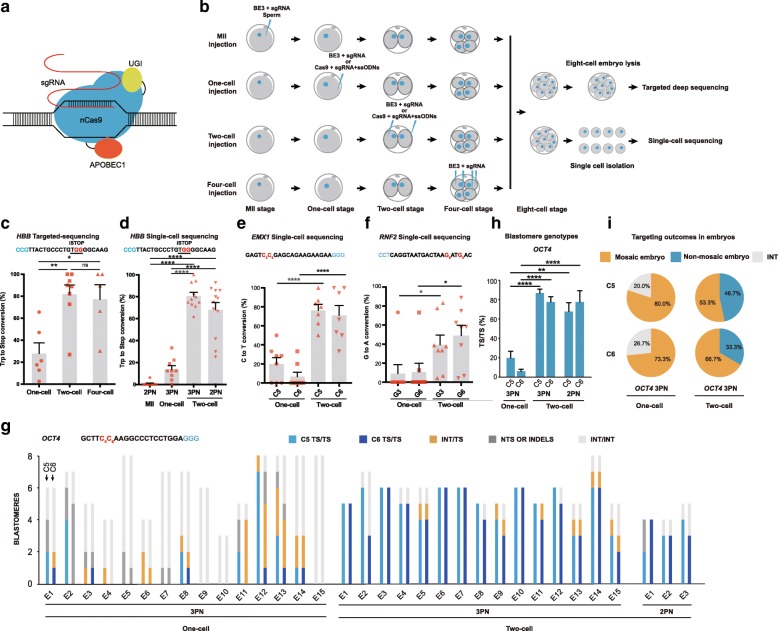Fig. 1.
Improved base-editing efficiency in human cleaving embryos compared with MII oocytes and zygotes. a Experiment design. Different reagent mixtures were injected into MII oocytes, one-cell, two-cell, or four-cell stage embryos. Embryos were cultured to the eight-cell stage and used for targeted deep sequencing or single-cell sequencing. b Schematics of base editor components and working principle. c Targeted deep sequencing analysis of embryos injected with BE3 targeting HBB locus at one-cell, two-cell, or four-cell stage. Percentage of the total reads with targeted Trp codon to stop codon conversion on the HBB locus. SgRNA and PAM sequences are shown in black and blue, respectively. BE3-mediated nucleotide substitutions are shown in red. iSTOP, induction of stop codon. d Single-cell sequencing analysis of embryos injected with BE3 targeting HBB locus at MII, one-cell, two-cell, or four-cell stage. Percentage of alleles with targeted C>T conversions on the HBB is shown. 2PN, two pronuclei; 3PN, three pronuclei. e, f Single-cell analysis of embryos injected with BE3 at one-cell or two-cell stage targeting EMX1 (e) and RNF2 (f) loci. Percentage of alleles with targeted C>T or G>A conversions is shown. g Blastomere genotyping results of embryos injected with BE3 targeting OCT4 locus. TS, targeted substitution; NTS, non-targeted substitution; INT, intact. h, i Homozygotic on-target efficiency at blastomere (h) and embryo (i) level respectively with BE3 targeting OCT4 locus. Each data point represents an individual embryo. Results are presented as mean ± SEM. *P < 0.05, **P < 0.01, ***P < 0.001, ****P < 0.0001, unpaired Student’s t test. ns, not significant

